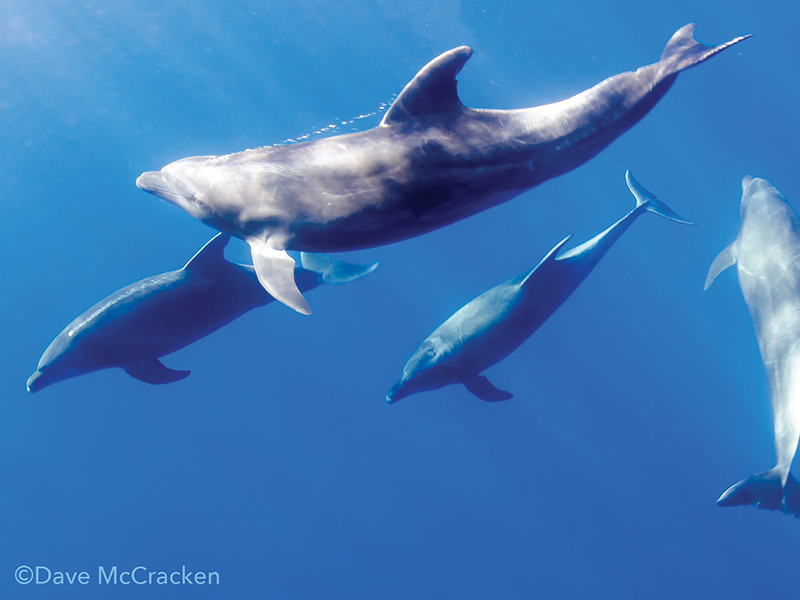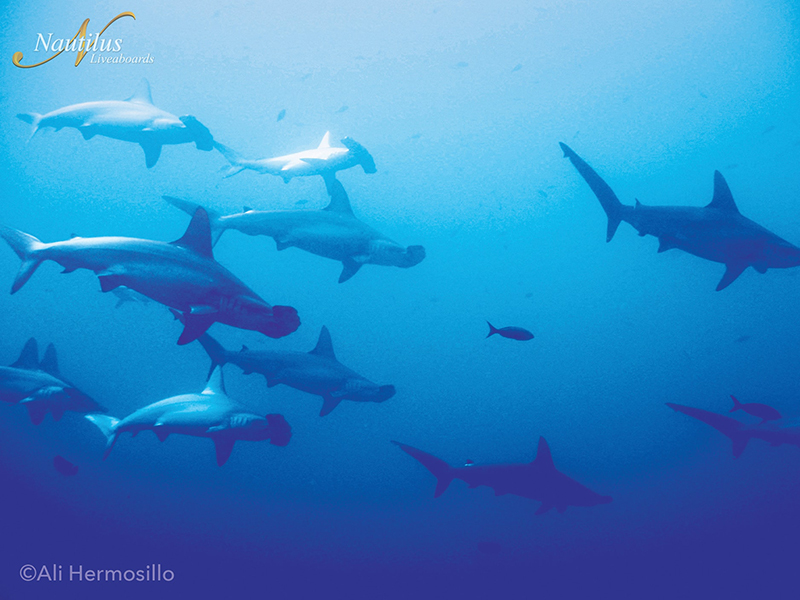
If you are looking to dive with really big manta rays — and a lot of them — the place to go is San Benedicto Island. At certain times of the year, as many as 400 to 500 of these graceful giants congregate in the clear oceanic waters surrounding this uninhabited speck of land. And these rays aren't shy. Instead of avoiding bubble-blowing humans, they often swoop in for a closer look, and may even engage in games of tag or follow the leader.
Learn more about diving in the Socorro Islands and other encounters off Mexico's Pacific coast by visiting our Diving Baja page.

There's a good chance of seeing rays at any time of the year at San Benedicto, but the action really picks up in the months between November and June. Mantas with wingspans of up to 20 feet arrive from open water to gather at cleaning stations where small angelfish rid the rays of parasites. One of the most famous of these sites is an undersea pinnacle known as The Boiler, which rises from the depths to within 20 feet of the surface. But this is far from the only site where divers can meet mantas, and the big rays aren't the only attraction.

San Benedicto is part of an uninhabited group of islands known as the Socorro that sit some 240 miles southwest of Cabo San Lucas. These isolated volcanic formations rise from deep water to create an oceanic oasis. Socorro is known in diving circles as one of the world's premier destinations for big animal encounters, and have been designated as a UNESCO World Heritage Site. The list of year-round and seasonal sightings that divers can enjoy in Socorro takes in everything from gregarious pods of resident bottlenose dolphins and playful sea lions to numerous species of sharks and whales.

Divers can count on white-tips, reef, silver tips, Galapagos, silky, hammerhead and thresher sharks, plus a chance for tiger shark and whale shark sightings. False killer and pilot whales are regulars, and humpbacks make seasonal appearances. Adding to the mix are sea turtles, massive schools of jack, trevally and tuna, seasonal bait ball formations that attract pelagic predators and an assortment of reef dwellers found among the volcanic slopes of the islands and pinnacles.

Despite their remote location, the Socorro Islands are not difficult to reach. Liveaboards based in Cabo San Lucas and San Jose del Cabo make regular passages to the islands for week-long adventures that take in a variety of unique marine life encounters. Top choice for Socorro dive trips are the liveaboards of the Nautilus fleet. These include the Nautilus Explorer, a 132-foot luxury dive yacht that is stabilized and recognized as the world’s first fully SOLAS-certified dive liveaboard. Also in the fleet are the equally-equipped sister-ships Nautilus Belle Amie and the Nautilus Undersea, all providing nine-day itineraries that include a full week of diving. The company behind the Nautilus fleet was among the pioneers of Socorro diving, has operated trips to the islands for more than 45 years.

Seasonal water temperatures in the Socorros range between 70° and 82° degrees Fahrenheit, and water clarity often exceeds 100 feet, providing ample sunlight on deeper dive sites and allowing for excellent wide-angle photo opportunities. Many of the best animal encounters take place at depths below 60 feet, and currents can run from mild to strong. To get the most enjoyment from a Socorro trip, divers are suggested to have Advanced Open Water training or equivalent skills, and a minimum of 50 dives prior experience.

For more information on upcoming dates and availability for trips to the Socorro Islands to dive with giant mantas, contact your Caradonna agent at 800.328.2288 or send a note to sales@caradonna.com.